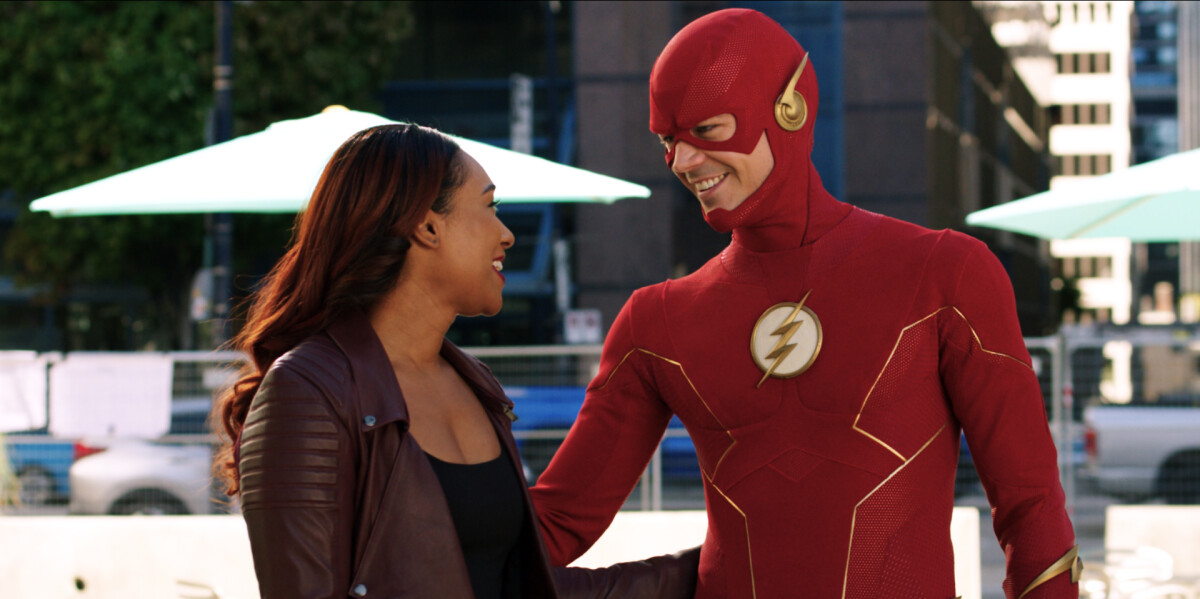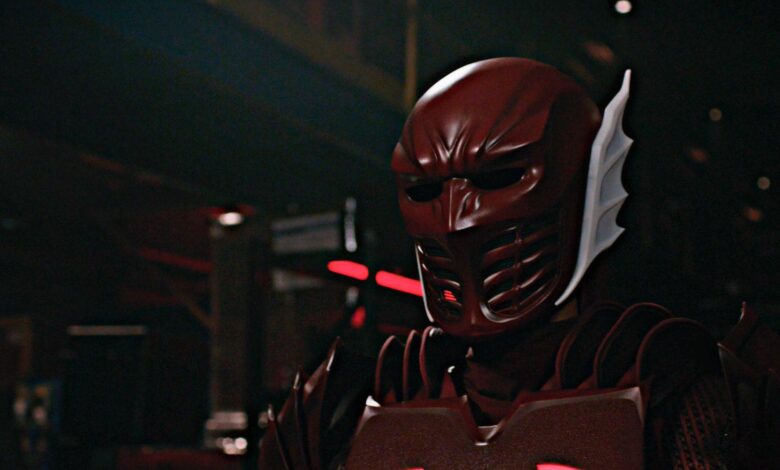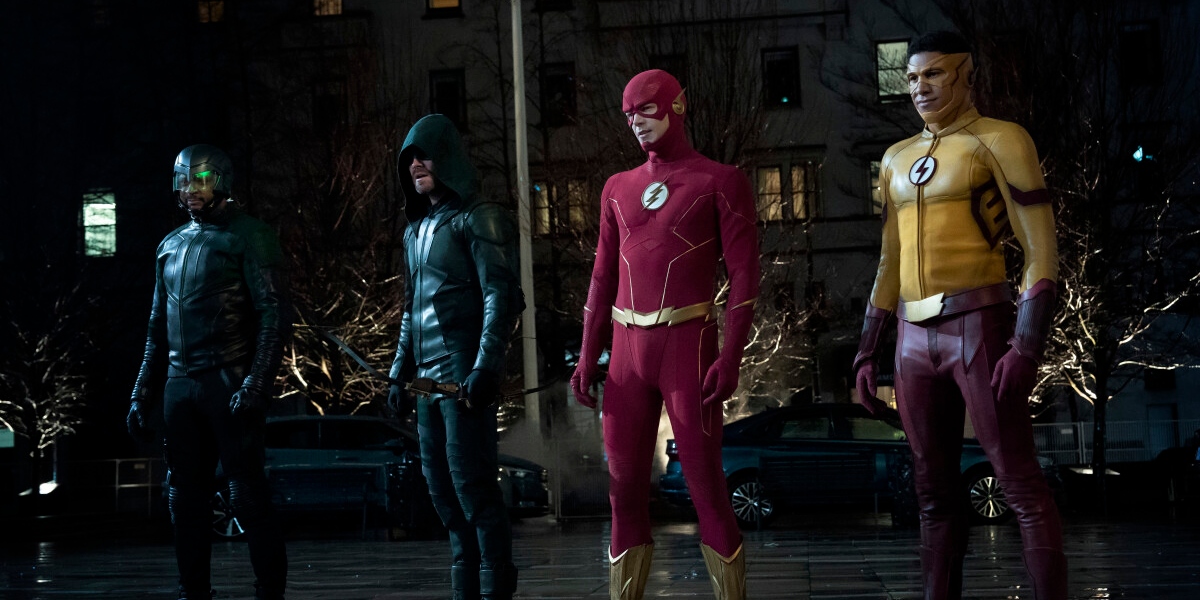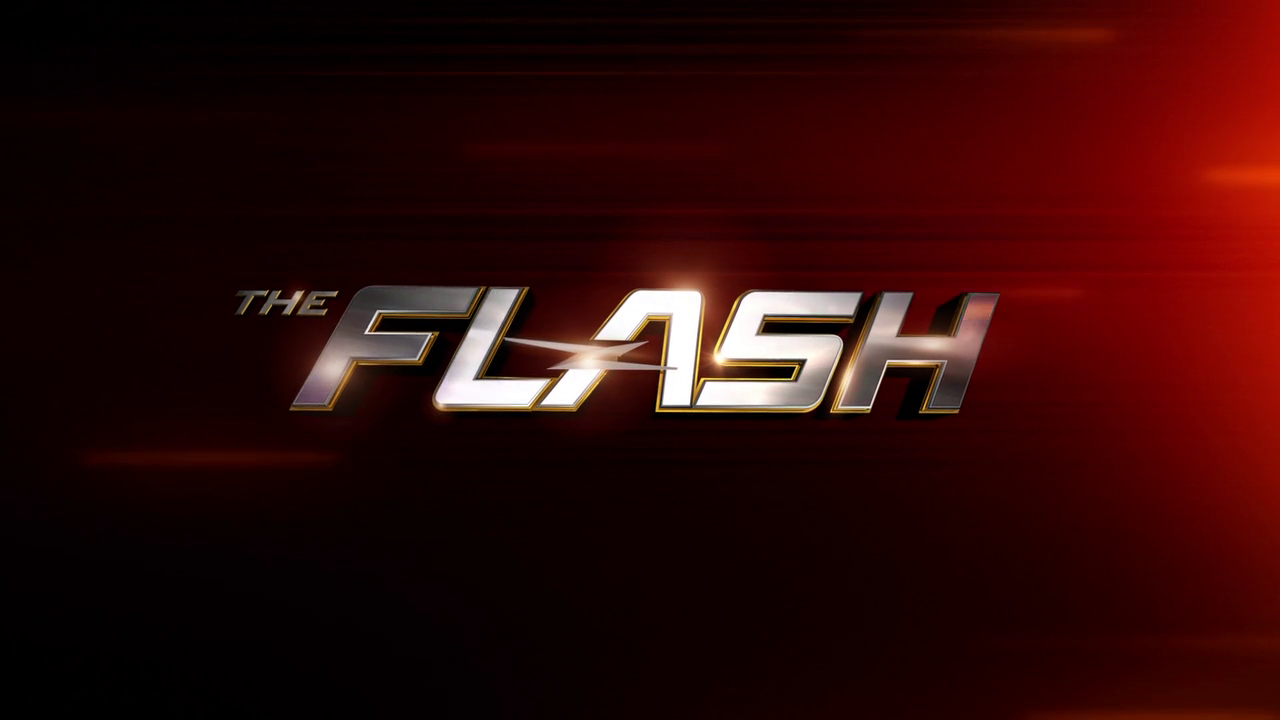NOTE: Some spoilers from throughout the ninth and final season of, “The Flash” are present in this review
It’s hard to believe that the Arrowverse, once the largest and most ambitious live-action superhero continuity in television history, has come to an end.
The CW has nonetheless opted to just barely hang on to the superhero train, with a belated fourth season renewal for its one surviving veteran DC drama, Superman & Lois, but with simultaneous confirmation that freshman DC series, Gotham Knights is being cancelled after just one season, even the Man of Steel’s surprisingly strong CW offering is bound not to survive much longer. Before Superman & Lois meets the cancellation reaper itself however, either next year or the year after (as predicted by new DC Studios co-head, James Gunn), DC fans are already bidding farewell to The Flash this year, and with it, the shared Arrowverse canon at large.
As much as it was a bit of a niche universe, with only progenitor series, Arrow winning much mainstream recognition alongside The Flash, its first of many spin-offs, one can’t understate the significant impact that the Arrowverse had on superhero television. Despite the quality of each Arrowverse show being highly uneven for the most part, both in terms of storytelling and special effects, the fact that the Arrowverse survived over a decade while crafting what’s essentially a primetime TV answer to the Marvel Cinematic Universe remains an enviable achievement, especially considering DC’s many struggles to adapt the bulk of their superhero IP’s to film. This is why it’s impossible to send off The Flash without also acknowledging its status as a final funeral for the Arrowverse at large, with the Arrowverse’s death marking just one of many of DC’s small screen casualties recently, as the Distinguished Competition prepares to launch James Gunn’s and Peter Safran’s new, fully linked ‘DCU’ franchise, with, ironically enough, the unrelated feature film version of The Flash.

I acknowledge the great strides that the Arrowverse has delivered when it comes to representation, ambition and comic book-style ceremony, particularly on such a paltry CW budget. Even so, the Arrowverse definitely peaked with its landmark, record-shattering 2019/2020 crossover event, Crisis on Infinite Earths, a sprawling five-part story that incorporated a slew of DC’s live-action characters from both television and film, and which concluded with an Arrowverse-wide reset that fully folded former satellite shows, Supergirl and Black Lightning into the same central universe. The Arrowverse never really managed to find a good way to exploit that reset however, instead flagging quickly after the conclusion of Arrow in early 2020, before Supergirl, Black Lightning, Legends of Tomorrow and Batwoman all limped their way to thankless deaths that followed a series of diminishing narrative returns, and Superman & Lois got out of dodge by wisely retconning itself into a self-contained solo universe, following its sophomore season finale.
I bring up the unfortunate fate of the Arrowverse because it’s crucial to properly assessing the ninth and final season of The Flash, a concluding batch of thirteen episodes that feels like it’s already tired of its own heroes. There are still some ambitious ideas that manage to make their way into this final season at least, complete with a few storylines built around character cameos from Arrow, Supergirl and Batwoman, which is not a bad way to punctuate the fact that this season is not just wrapping up The Flash itself, but also the entire Arrowverse. Even those cameo storylines range heavily in quality though, with some of their ultimate battles feeling unimpressive and unremarkable. To add insult to injury, a previously-promised epilogue storyline for Legends of Tomorrow appears to have been cut during this final season’s development, leaving that series’ abrupt final cliffhanger to sting even harder, as the Legends presumably spend the rest of eternity rotting in time jail now, thanks to new CW parent, Nexstar.
On the bright side, we’re definitely not wanting for some significant villains to battle during The Flash’s final season. Two new ‘graphic novel’ arcs and a middle interlude give us plenty of familiar and new baddies, with the season kicking off on a new batch of Rogues, consisting of revised, post-Crisis renditions of Captain Boomerang, Fiddler and Murmur. These villains give us a decent new extended Rogues storyline that delivers something The Flash really needed to utilize better throughout most of its nine-season run, namely battles against its various Rogues factions. Even better is that the new Rogues serve a fairly exciting arch-foe, Red Death, a loose reinvention of a more recent Flash villain from DC Comics lore, namely an evil Batman with Speed Force abilities, only in this case, it’s an evil Batwoman with Speed Force abilities. Javicia Leslie reprises her former lead role from Batwoman as an alternate Arrowverse Dark Knight, combining the brilliance of Wayne Tech with the power of the Negative Speed Force, and while this leads up to a confrontation that’s still noticeably hampered by the ever-diminishing CW funding that’s allotted for The Flash’s last episodes, the Red Death and Rogues storyline actually ended up being the more interesting of the two graphic novel arcs in the end.
“We’re definitely not wanting for some significant villains to battle during The Flash’s final season.”
The second and final graphic novel arc for The Flash’s last season, “A New World” mostly felt like a missed opportunity that squandered a pretty great hook. With Iris now being pregnant with future West-Allen family daughter, Nora, Barry vanishes right as baby Nora is about to be born, finding himself trapped in the past. This begins as a smart way for Barry’s emotional journey to come full circle, as he eventually comes to realize that he’s been pulled back to the day of his mother’s murder, giving Barry one last chance to interact with his parents, while Team Flash struggles to get him back to the present. All the while, the Negative Speed Force once again tries to cheat the balance of reality with a strange new crystal, one that eventually finds its way to a resurrected Eddie Thawne!
Bringing back Eddie and effectively turning him into The Flash’s ultimate big bad, to the point of even surpassing an also-returning Eobard Thawne/Reverse Flash in that role, is a very bold move, but it could have been amazing. Eddie is quickly driven insane both by the reminder of his sacrifice, and the fact that another man has stolen the life he was supposed to live with Iris, eventually allowing the Negative Speed Force to twist Eddie into a powerful new speedster avatar called ‘Cobalt Blue’. Cobalt Blue is another more recent Flash villain from DC Comics lore, wherein he’s Malcolm Thawne, a lost twin of Barry’s that becomes the ancestor of Barry’s arch-nemesis, Eobard Thawne. Reinventing Eddie as the Arrowverse’s Cobalt Blue is actually a fantastic idea in concept, particularly when it also allows for an opportunity to bring virtually every evil speedster from The Flash’s history back for one big fight during the show’s final episode, including Reverse Flash, Zoom, Savitar and Godspeed.
Frustratingly though, the final confrontation with Eddie is ultimately a waste. This entire battle is resolved with an Arrowverse-approved pep talk between Barry and Eddie, leading to some nebulous renewed balance between the Speed Force and the Negative Speed Force, one that eventually allows Barry to randomly create three new speedsters, while continuing to function as The Flash. It’s a bit neat to see nods to successor speedsters from DC Comics lore like Max Mercury get a tip of the hat here, but otherwise, this ending feels rushed, it makes no sense at all, even by Arrowverse standards, and it makes for a lacklustre wrap-up to the Arrowverse as a whole, even if it could be worse as a conclusion to The Flash by itself. Similar to the Arrowverse’s previous endings for Supergirl and Batwoman, I suppose it is at least uplifting that Barry and Team Flash will continue to fight for the forces of good off-screen.

In the end, easily the best of The Flash’s final confrontations was a returning battle against Season 6 villain, Bloodwork. After escaping A.R.G.U.S., Ramsey Rosso ends up infiltrating Barry’s birthday party and incapacitating his entire team, save for Barry and fellow speedster, Wally. Wally’s brief return here also serves as a vector for informing Team Flash that a new multiverse was born after Crisis on Infinite Earths as well, finally alerting the Arrowverse to the fact that there is indeed a new set of infinite DC worlds that it’s since become disconnected from, or is supposed to be disconnected from anyway, since Red Death ultimately ends up being from another Earth, not another timeline. This is supposed to be a big moment for this show’s story, but because the Arrowverse is about to die, and probably won’t be acknowledged anywhere in DC’s multiverse again for many years, if ever again, it doesn’t matter. Sure, the returns of Stephen Amell’s Oliver Queen/Green Arrow and David Ramsey’s John Diggle/Spartan were superb in this episode, which also presented a decently cool battle against Bloodwork for the fate of the multiverse, but that begs the question; Why wasn’t this episode the basis for the series finale? I get the logic behind a big speedster battle royale, but the Bloodwork battle is both better and more interesting, on top of carrying more narrative stakes for DC’s many universes, even beyond the Arrowverse.
Sadly, most of the character work throughout The Flash’s final season is also a complete waste. Barry and Iris feel like they have absolutely nowhere to go as characters in this universe anymore, as I’ve already mentioned, leaving them to fret and vex over the same tired lessons that they’ve already learned. Likewise, there is a huge amount of emphasis on Chester’s and Allegra’s budding romance throughout this final season, but they still don’t have believable chemistry, so this still fails to matter. Cecile fares a bit better on this note, having to adjust to superhero life without Joe in Central City, after Joe opts to take Jenna and move out to the country, but even this significant character exit doesn’t matter much, because The Flash is forcing it into its final episodes. At least Jesse L. Martin finally got to leave this show with dignity however, albeit right at the finish line, after sustaining injuries that he nonetheless had to soldier through during prior seasons.
“Perhaps the most head-scratching character story throughout The Flash’s final season however is that of Khione, an all-new character portrayed by series lead, Danielle Panabaker.”
Perhaps the most head-scratching character story throughout The Flash’s final season however is that of Khione, an all-new character portrayed by series lead, Danielle Panabaker. After Frost died following the battle against Deathstorm last season, and Caitlin is subsequently destroyed through a botched effort to resurrect her, Chillblaine finds that Caitlin’s body has been appropriated by a mysterious entity called Khione. Khione has no memories, and is more or less a blank slate, but she both does and does not appear to have superpowers, depending on what the plot needs in that moment. Chillblaine having to confront and resolve his grief over Frost through Khione’s presence isn’t a bad idea however, and in fact, it’s amazingly some of the best characterization that Chillblaine has ever managed to have on this show! Better late than never, eh? Regardless, Khione herself is a boring Deus Ex Machina that leaves the series as confusingly as she entered it, ultimately resurrecting Caitlin towards the end of the series finale. If Khione could have done that so easily, then why was she bothering to hang around Team Flash for so long? This entire character just doesn’t make sense, ultimately feeling as if Panabaker was simply sick of playing Caitlin, and insisted on playing a different character for The Flash’s final episodes, regardless of whether or not that character fit in the show’s ensemble.
Speaking of character disappointment, Carlos Valdes doesn’t make any return appearances as Cisco during these final episodes, sadly, though Tom Cavanagh does manage to make a couple of final guest appearances as both Reverse Flash, and a divine Harrison Wells doppelganger. This flimsy character work, alongside too much half-baked storytelling, ultimately adds up to a final season for The Flash that’s highly uneven, and one that fails to send the series, and the Arrowverse, off on a truly fulfilling note. This is very frustrating, since the first two seasons of The Flash especially mark some of the best primetime superhero television ever made. This series has fallen pretty far since those days though, and while it did see a refreshing creative boost under new showrunner, Eric Wallace from Season 6, even that boost appears to have waned far faster than hoped.

With Ezra Miller and the DCU soon bringing a live-action take on The Flash to major cinematic territory with a dedicated feature film as well, the Scarlet Speedster is already moving on before his CW series’ corpse is even cold. That right there sums up how thanklessly the Arrowverse died in the end. Sure, I’ve had my issues with the Arrowverse’s low points, and boy, did it have some infuriating low points, but when the Arrowverse hit a home run, it truly was an epic spectacle for superhero enthusiasts in its own right. The fact that The Flash’s ninth and final season is frequently such a confused mess too often undermines its decently commendable narrative ambitions, particularly after its series finale pretty much completely gives up on crafting a satisfying conclusion to the show, and its shared universe.
It could have been worse for sure, but this final season for The Flash definitely could have been better as well. Hell, it deserved to be better! That’s really what hurts the most as we say goodbye to the once-beloved Arrowverse, once the pinnacle of exciting superhero TV, and now just more dry kindling for the coming rise of the rebooted DCU.

